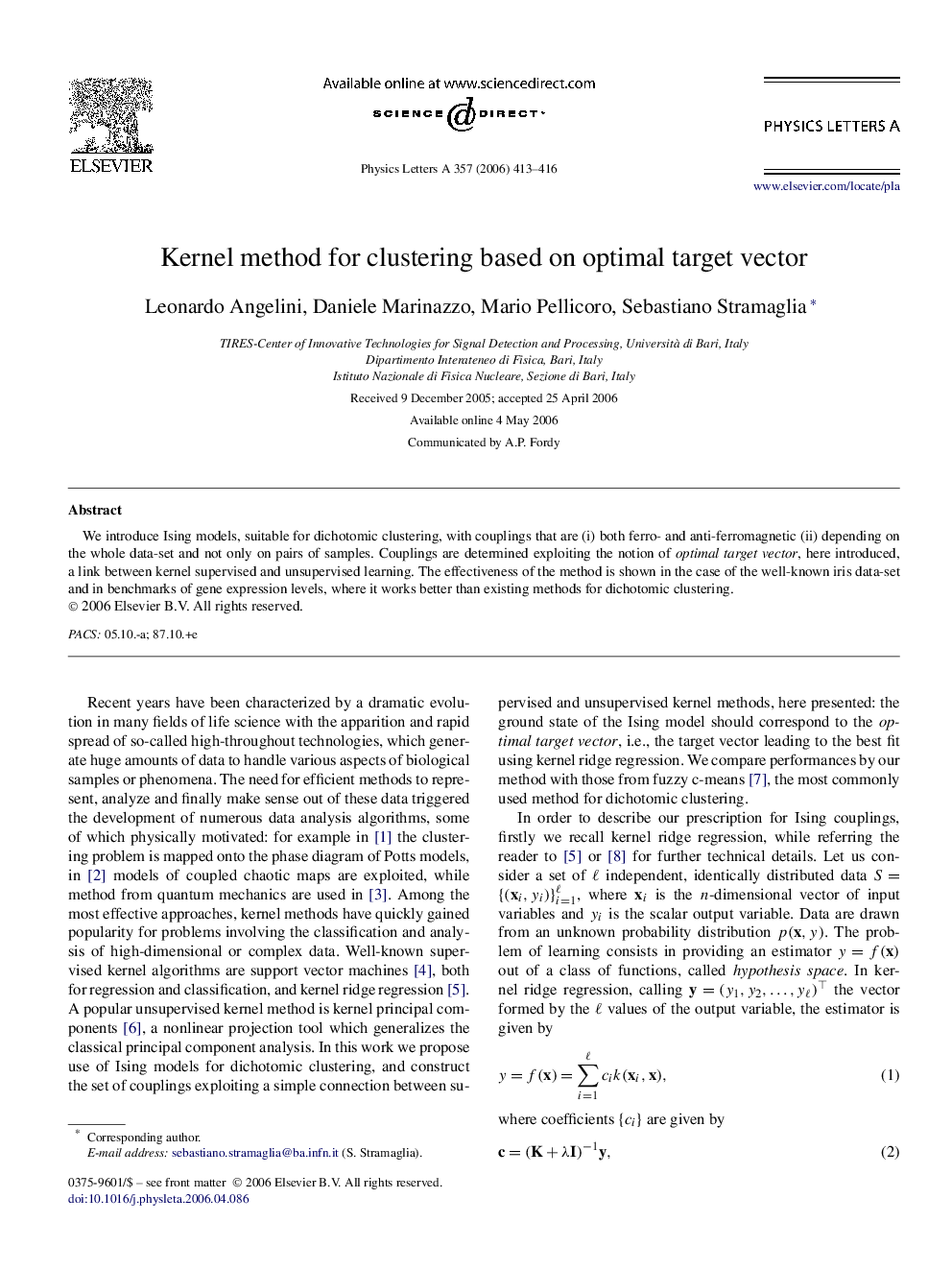| Article ID | Journal | Published Year | Pages | File Type |
|---|---|---|---|---|
| 1866481 | Physics Letters A | 2006 | 4 Pages |
Abstract
We introduce Ising models, suitable for dichotomic clustering, with couplings that are (i) both ferro- and anti-ferromagnetic (ii) depending on the whole data-set and not only on pairs of samples. Couplings are determined exploiting the notion of optimal target vector, here introduced, a link between kernel supervised and unsupervised learning. The effectiveness of the method is shown in the case of the well-known iris data-set and in benchmarks of gene expression levels, where it works better than existing methods for dichotomic clustering.
Related Topics
Physical Sciences and Engineering
Physics and Astronomy
Physics and Astronomy (General)
Authors
Leonardo Angelini, Daniele Marinazzo, Mario Pellicoro, Sebastiano Stramaglia,
